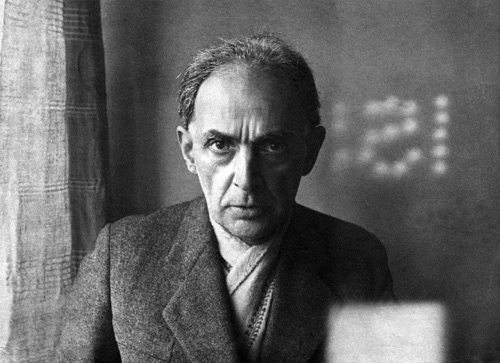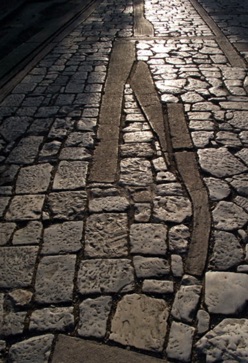SPOON-LAND
'The Grid and The Pathway...and The Spoon'
Bristol, UWE.
Experimental development.
Originally part of a group exhibition with The ETC Project, University of the West of England, Bristol.
on-going project/ work-in-progress
EXHIBITION POSTER:





photo: USA, Antony Lyons
"The extent of the American grid is remarkable as it spreads seemingly without end until it reaches the west coast, interrupted only by natural features. So ubiquitous and established is the grid that there are moments when one wrongly thinks that the natural features have penetrated it instead of the other way around"
Alex MacLean, Exploring America from the Air, 2003

DISTURBANCE, FLUIDITY, TRANSGRESSION
The starting point for this exploration was a spoon (or the idea of a 'spoon') - and an invitation to introduce this into a piece of work (for the 'ETC Project').
With my strong landscape focus, there appeared to be an unbridgeable gap in scale; at least until I stumbled upon 'Dal cucchiaio alla città' ("From the spoon to the city") - the slogan coined by the architect Ernesto Rogers in 1952, in the Charta of Athens - referring to his typical approach of designing a spoon, a chair, and a lamp and in the same day as working on a skyscraper. (the phrase probably works better in Italian?)
Playing with this, I began to juxtapose two alternative perspectives of a cityscape (or indeed any landscape): the familiar, US-style 'grid-pattern', and a possible counterpoint - a landscape of pathways, meanderings and 'desire lines'. The former has the attributes of order, control, rigidity, excluding natural processes; the alternative is fluid, sinuous and free-flowing. Water and people journey through the fabric, collect, rest, then continue on the journey. This is the ecophilic notion of the 'Spoon-Land' - a 'making space' within the grid for water ecologies. Spoon-Land challenges the hegemony of the grid; it transgresses and disturbs the current paradigms.
[There is a relationship here too of the geological meaning of 'transgression'...the gradual inundation of landmasses by the rising, sediment-depositing sea. Thus, the evidence of many such floods is preserved in the geological record. Here are some details of a new film project on this topic.]
Musing on grids, freedom, transgression, I stumble on Deleuze's ideas of 'striated space', 'smooth space' and 'lines of flight' (diagram above right, by Sue Ruddick).
“Lines of flight are everywhere. They constitute the available means of escape from the forces of repression and stratification. Even the most intense strata are riddled with lines of flight.” Miguel Rojas-Sotelo
The grid structure is also disrupted in the spoon-like gravity-well (image below right) in the space-time grid - while the 'lines of flight' are escaping the confines of the grid.
RESISTANCE + (GEO)POETICS
Such mental wanderings and wonderings prompted an encounter with ‘The Grid and the Pathway,’ an essay by Greek architect and author Alexander Tzonis (in which the term 'Critical Regionalism' was first coined). The 'Pathway' of the title partly relates to the work of the architect Dimitris Pikionis, on the Philopappus Hill, Athens (below).
"an ordering of "places made for the occasion," unfolding around the hill for solitary contemplation, for intimate discussion, for a small gathering, for a vast assembly.
To weave this extraordinary braid of niches and passages and situations, Pikionis identifies appropriate components from the lived-in spaces of folk architecture, but in this project the link with the regional is not made out of tender emotion. In a completely different attitude, these envelopes of concrete events are studied with a cold empirical method, as if documented by an archaeologist. Neither is their selection and their positioning carried out to stir easy superficial emotion. They are platforms to be used in an everyday sense but to supply that which, in the context of contemporary architecture, everyday life does not. The investigation of the local is the condition for reaching the concrete and the real, and for re-humanizing architecture."
"I will never forget my initial encounter with Pikionis when in 1959 I first visited the Acropolis and found myself walking almost by chance in the astonishing adjacent parks cape of the Philopappou Hill. There I sensed, with great surprise, the almost literal movement of the landfall as my frame was drawn by gravity and by the tactile grip of the paving, up and down the undulating labyrinth of the terrain; a site that was to be experienced as much by the body as by the eyes...
...Pikionis is surely one of these latter-day luminaries, for his resonant work draws us back at once into a phenomenally concrete world, into a world of revealed radiance, where the 'thingness' of things, to coin Heidegger's phrase, comes into its own. "
Kenneth Frampton, From 'Dimitris Pikionis, Architect 1887-1968 A Sentimental Topography', Architectural Association, London.
According to Frampton, Critical Regionalism is:
"a sort of resignation, a sense of holding operation, a sense of resistance...the bounded fragment against which the ceaseless inundation of a place-less, alienating consumerism will find itself momentarily checked...(by) a place-conscious poetic"
PATTERN LANGUAGE
Another architecturally-derived strand to introduce here is that of Christopher Alexander (et. al.), and his hugely influential (or very frequently referenced) ' A Pattern Language'. His more recent work on 'morphogenesis' also has a bearing on this study. TO BE CONTINUED...
"LIQUIFYING A LANDSCAPE"
Andrei Tarkovsky, with his spiritual and metaphysical preoccupations, embraces nature, memory, the elements, the watery murkiness, layers of meaning, all navigating within the dream. His film Stalker, based on the Strugatsky Brothers' 1972 novel Roadside Picnic, has become the foundation of an entire aesthetic.
"The primary message of his movies is simply what the imagery states: No part of life or nature is fixed in an immovable role; grace or change can come into a person's life when he or she wakes to the belief that contraries can connect, and blend, and even change places. In a poet's vision the relationship between opposites – earth and sky, fire and water, past and present, inside and outside, image and reflection, dream and waking – is fluid and not fixed, and only our mulish conviction that the world is an unshakable structure of frozen, antithetical verities holds us back from glimpsing a reality outside ourselves...the pool of water or puddle – Tarkovsky's favorite visual motif of all – is at once a kind of mirror, allowing a piece of sky to lie on the ground (Heaven lying with Earth); it is a suggestion of flux and fluid uncertainty, diminishing the authority of terra firma; and it is purest painterliness, lyricizing or liquifying a landscape"
'SPOON-LAND' points perhaps to a future - gentler, intimate - accommodation of natural processes within the fraying edges of agressive and brutalist design. A bio/eco-philia prevailing. Formal structures are 'greened over'; life-supporting water flows through, temporarily ponds, then overflows. The vertical axial rotation of a standing spoon produces a tree-like form (and water flows within...).

Pikionis


Pikionis, “IMAGINARY THEMES” (1935)